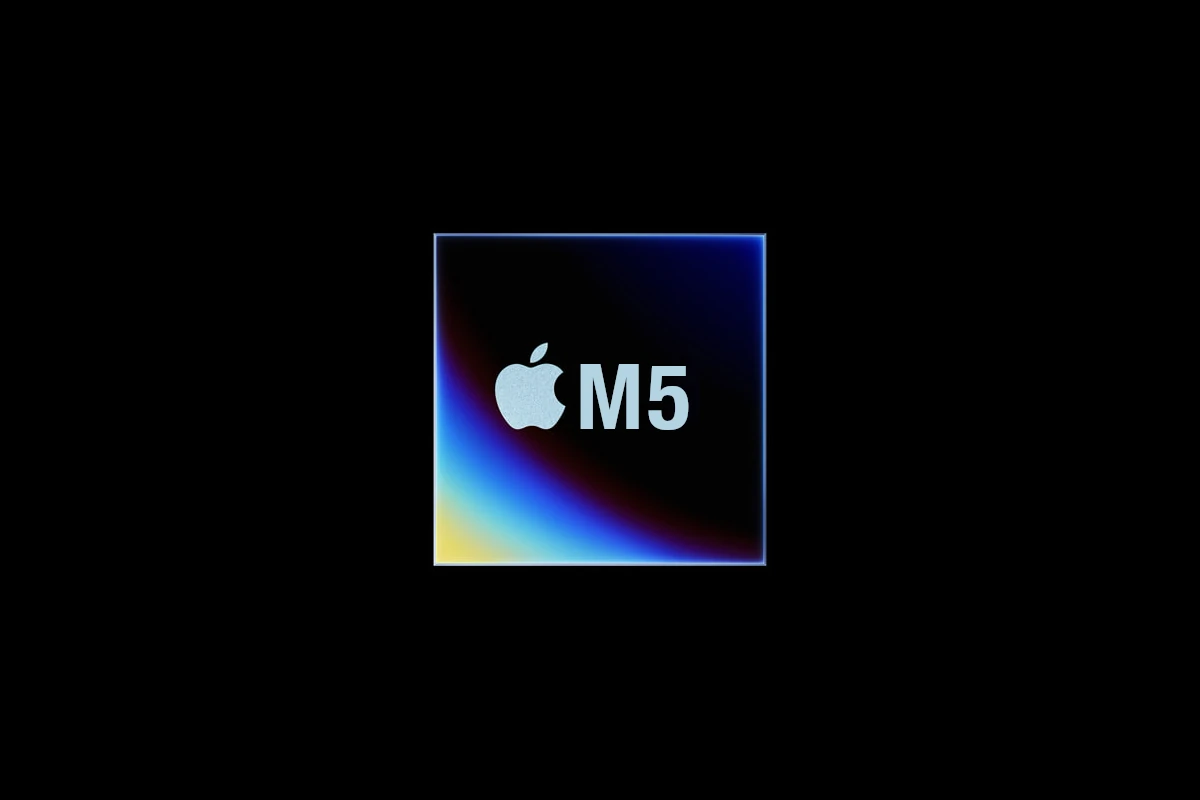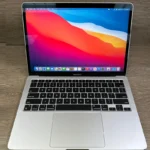Apple’s silicon journey continues to accelerate with the much-anticipated M5 chip, poised to redefine performance and efficiency across the company’s flagship devices. Expected to debut in several key products throughout 2025—including the iPad Pro, Vision Pro headset, MacBook Pro, Mac mini, and iMac—the M5 chip represents a significant leap forward in Apple’s custom silicon lineup.
Why the M5 Matters: Learning from the M4
The M5 chip is designed to address some of the criticisms and limitations that surrounded its predecessor, the M4 chip. While the M4 introduced notable advancements, it faced pushback over certain design choices that impacted performance scaling and power efficiency. Apple’s engineering teams have taken this feedback seriously, focusing on delivering a chip that not only boosts raw computational power but also optimizes thermal management and battery life—critical for mobile devices like the iPad Pro and MacBook Air.
Performance and Innovation: What to Expect
The M5 is expected to bring a substantial uplift in CPU and GPU performance, leveraging the latest advancements in semiconductor fabrication technology. Early indicators suggest the chip will utilize an enhanced 3-nanometer process node, which enables more transistors in a smaller area, translating to faster processing speeds and better energy efficiency.
One of the standout features of the M5 Mac Mini will be the availability of both standard M5 and the more powerful M5 Pro variants. This diversification allows Apple to cater to a broader range of users—from casual consumers to professionals demanding intensive computational workloads. The inclusion of Thunderbolt 5 support in these models promises faster data transfer rates and expanded connectivity options, future-proofing Apple’s desktops for years to come.
Delays and What They Mean
While the M5 chip is making its way into devices like the iPad Pro and Vision Pro in 2025, the release of M5-powered MacBook Pro and MacBook Air models has been delayed until 2026. This postponement likely reflects Apple’s commitment to refining the chip’s integration with these portable devices to ensure optimal performance and battery life, rather than rushing a product to market. It also aligns with the company’s broader strategy of staggering product launches to maintain consumer interest and manage supply chain logistics amid global semiconductor challenges.
The Bigger Picture: Apple’s Silicon Roadmap
The M5 chip is a critical milestone in Apple’s ambitious silicon roadmap, which is already looking ahead to the M6 generation. Each iteration not only improves on raw speed but also deepens integration with Apple’s software ecosystem, enabling features like advanced machine learning, enhanced security, and improved multimedia processing.
This vertical integration—designing both the hardware and software—gives Apple a unique advantage, allowing it to tailor chips precisely to the needs of its devices and users. As a result, Apple’s Macs and iPads continue to close the gap with, and in some cases surpass, traditional x86-based PCs in both performance and efficiency.
What This Means for Consumers and Professionals
For consumers, the M5-powered devices promise smoother multitasking, faster app launches, and longer battery life, enhancing everyday productivity and entertainment experiences. For creative professionals and developers, the enhanced GPU capabilities and expanded memory bandwidth open new possibilities for video editing, 3D rendering, and software development on portable devices.
Moreover, the Vision Pro headset powered by the M5 chip signals Apple’s push into spatial computing, where high-performance, low-latency processing is essential for immersive augmented and virtual reality experiences.
In summary, the Apple M5 chip is not just a simple upgrade; it’s a strategic evolution that strengthens Apple’s silicon dominance and sets the stage for future innovations across its product lineup. While some delays have pushed certain devices into 2026, the overall trajectory points to a more powerful, efficient, and versatile Apple ecosystem powered by the M5 and beyond.
M2 vs M3 Chip
Apple’s M2 and M3 chips represent significant steps in the company’s silicon evolution, but which one is right for you? The M3 chip packs 25 billion transistors, a 25% increase over the M2, enabling notable performance improvements. The M3 outperforms the M2 by approximately 17% in single-core tasks and 21% in multi-core operations, making it a worthy upgrade for users who need extra processing power.
Beyond raw performance, the M3 chip brings practical advantages for everyday use. It supports connecting to two external monitors simultaneously, features improved video performance and SSD speeds, and even enhances video calls with better noise cancellation. For graphics-intensive tasks, the M3 Max variant offers up to 40 GPU cores, surpassing the M2 Max’s maximum of 38 cores.
Here’s a table comparing the Apple M2 and M3 chips, focusing on their general characteristics. Keep in mind that both chips come in various configurations (Pro, Max, Ultra), which offer increasing levels of performance and specialized features. This table highlights the base M2 and M3 chips.
| Feature | Apple M2 Chip | Apple M3 Chip |
| Manufacturing Process | 5nm process | 3nm process (more advanced, better efficiency) |
| Transistor Count | 20 billion | 25 billion |
| CPU Cores | 8-core (4 performance, 4 efficiency) | 8-core (4 performance, 4 efficiency) |
| CPU Performance | Up to 3.49 GHz clock speed; good performance | Up to 4.05 GHz clock speed; ~15-20% faster in single/multi-core tasks |
| GPU Cores | Up to 10-core GPU | Up to 10-core GPU (with new architecture) |
| GPU Performance | Strong graphics performance | ~15% faster GPU performance; includes Dynamic Caching, hardware-accelerated ray tracing, and mesh shading |
| Neural Engine | 16-core Neural Engine | 16-core Neural Engine (faster/more efficient for AI/ML) |
| Unified Memory | Up to 24GB unified memory | Up to 24GB unified memory |
| Memory Bandwidth | 100GB/s | 100GB/s |
| Efficiency | Very good | Improved energy efficiency due to 3nm process |
| Wireless | Wi-Fi 6 | Wi-Fi 6E (faster and more reliable) |
| External Displays (MacBook Air) | Supports 1 external display | Supports 1 external display; 2 when lid is closed |
| Media Engine | Hardware-accelerated H.264, HEVC, ProRes, ProRes RAW; video decode/encode engines | Adds AV1 decode; improved overall media engine |
Key Takeaways:
- The M3 chip represents a significant leap due to its 3nm manufacturing process, which allows for more transistors in a smaller space, leading to better performance and power efficiency.
- While core counts might seem similar, the M3 offers noticeable performance gains in both CPU and GPU tasks, particularly in graphics-intensive applications and AI/ML workloads.
- New GPU features like Dynamic Caching, hardware-accelerated ray tracing, and mesh shading make the M3’s graphics capabilities superior for professional creative tasks and gaming.
- The M3 also brings modern connectivity with Wi-Fi 6E.
Key Takeaways
- The M3 chip delivers up to 21% better multi-core performance than the M2 chip.
- M3 MacBooks support dual external monitors while M2 models are limited to one.
- Graphics performance sees significant gains with the M3, with top models offering more GPU cores.
Evolution of Apple Silicon
Apple’s silicon journey has moved swiftly from the groundbreaking M1 to improved M2 and now the powerful M3 chips, each bringing significant performance and efficiency gains.
From M1 to M2
The leap from M1 to M2 marked an important step in Apple’s chip development. The Apple M2 chip built on the foundation laid by the M1 but added notable improvements. It featured more transistors and better performance while maintaining excellent battery life.
Apple expanded the M2 lineup with more powerful variants. The M2 Pro and M2 Max chips targeted professional users who needed extra processing power. These chips offered:
- More CPU and GPU cores
- Increased memory bandwidth
- Better handling of complex tasks
The M2 family powered several Mac models including MacBook Air, MacBook Pro, and Mac mini. Many users found the performance boost from M1 to M2 to be modest but worthwhile, especially for graphics-intensive tasks.
Anticipating M3
The M3 chip represents the third generation of Apple Silicon, bringing even more impressive gains. According to Apple, the M3 chip’s performance cores are 30% faster than M1 and the efficiency cores are 50% faster than M1.
When comparing directly to its predecessor, the M3 outperforms the M2 in almost all scenarios. Benchmark tests show roughly a 16% improvement in GPU performance over the M2. The M3 also brings:
- Enhanced power efficiency
- Improved machine learning capabilities
- Better graphics processing
Despite these improvements, some users note that the everyday experience across M1, M2, and M3 chips feels remarkably similar. This speaks to how revolutionary the initial M1 chip was when it launched.
Design and Architecture
The M3 chip introduces significant improvements over the M2 in terms of physical design and internal architecture. These advancements affect both processing power and energy use through enhanced transistor count and better component integration.
Transistors and Efficiency
The M3 chip represents a major leap forward with more transistors than its predecessor. While the M2 chip was built on second-generation 5nm technology, the M3 uses advanced 3nm process technology. This smaller process allows Apple to pack more transistors into the same space, boosting performance while using less power.
This design improvement directly impacts energy efficiency. The M3 can handle more complex tasks while drawing less battery power than the M2. For laptop users, this means longer battery life when performing the same tasks.
The new architecture also introduces dynamic caching, which allocates GPU memory in real time. This feature wasn’t available in the M2 and helps apps run more smoothly.
Integrated Components
Both M2 and M3 follow Apple’s system on a chip (SoC) design approach, but the M3 refines this integration. The unified memory architecture in the M3 is more efficient, allowing faster data sharing between CPU and GPU components.
The M3’s GPU received significant upgrades with hardware-accelerated ray tracing and mesh shading. These features were absent in the M2 chip and help create more realistic graphics in games and design apps.
The Secure Enclave remains a key component in both chips, but the M3’s version benefits from the improved manufacturing process. This means better protection for sensitive data without sacrificing speed.
Both chips keep the same basic port interfaces, making them identical in external connectivity options.
Processing Power
The M3 chip brings significant upgrades in processing capabilities compared to the M2. These improvements show up in both raw CPU performance and specialized neural processing for AI tasks.
CPU Capabilities
The M3 chip uses a more advanced 3-nanometer architecture, which allows for 25% more transistors in a smaller space than the M2’s 5-nanometer design. This smaller size means better energy efficiency and faster processing.
For single-core tasks like browsing or basic apps, the M3 shows notable improvements. The CPU in the M3 runs at a higher clock speed of 4.05 GHz compared to the M2’s 3.5 GHz, giving it a speed advantage for everyday tasks.
Multi-core performance also gets a boost. The M3 features 30% faster performance cores and 50% faster efficiency cores compared to the older M1 chip, with similar gains over the M2.
Real-world tasks like video editing, coding, and gaming run more smoothly on the M3. Users will notice faster app loading times and better responsiveness when switching between heavy applications.
Neural Engine and AI
The Neural Engine in the M3 chip has been redesigned to handle AI tasks more efficiently. Both chips have a 16-core Neural Engine, but the M3’s version processes AI calculations faster.
This improved Neural Engine helps with tasks like photo editing, voice recognition, and text prediction. Apps that use machine learning run more smoothly on the M3 chip.
The M3 handles complex AI features like live text recognition in videos and advanced image processing with less battery drain. This means better performance for apps that use AI features like Photoshop’s neural filters or video editing software.
Users working with AI-based tools will notice the M3 completes these tasks in less time. The chip can process more machine learning operations per second, making features like voice assistants and smart photo adjustments more responsive.
Graphics Performance
The M3 chip brings significant upgrades to Apple’s graphics capabilities with both hardware improvements and new features. These changes make a real difference for gaming and creative tasks.
GPU Enhancements
The M3 chip’s GPU delivers impressive performance gains over the M2. According to benchmark tests, the M3 offers about 15% better performance in Metal benchmarks compared to the M2. This boost comes despite both base models having 8-core GPUs.
For higher-end models, the differences are even more notable. The M3 Max with its 40-core GPU shows a 12% improvement over the M2 Max’s 38-core GPU. This means faster rendering times and smoother performance.
The M3 chip’s GPU achieves 4.1 TFLOPS of computing power, compared to the M2’s 2.9 TFLOPS. That’s a massive 41% increase in raw graphics processing capability.
Support for Advanced Features
The M3 chip brings ray tracing support to Apple Silicon for the first time. Ray tracing creates more realistic lighting, shadows, and reflections in games and 3D applications. This feature was missing from the M2 and marks a big step forward for Mac gaming.
Testing shows that while the M3 is typically 8-10% faster than the M2 for regular gaming, the gap widens significantly for games using ray tracing effects.
The M3 also introduces mesh shading support. This technology helps render complex 3D scenes more efficiently. It reduces the workload on the GPU when displaying detailed models with many polygons. Combined with ray tracing, these features put M3 Macs much closer to dedicated gaming systems in graphics capabilities.
Memory and Storage
Apple’s M2 and M3 chips show key differences in memory handling and storage speed that impact everyday performance. The improvements in the newer M3 chip offer faster data access and better multitasking capabilities.
RAM Efficiency
The M3 chip handles RAM more efficiently than the M2. This improvement lets your computer run more apps at once without slowing down. With better memory bandwidth, the M3 processor can move data between RAM and the CPU faster.
For users who work with large files or multiple programs, this means:
- Smoother video editing
- Faster photo processing
- Better gaming performance
- Less lag when switching between apps
The M3’s memory system benefits from the new 3-nanometer architecture. This smaller size allows for more efficient data transfer and lower power use when accessing RAM.
Dynamic Caching
The M3 chip includes improved dynamic caching, which smartly allocates memory resources where they’re needed most. This system watches what you’re doing and gives more memory to active tasks.
Storage speed tests show impressive gains with the M3 chip. The 256GB SSD in M3 MacBooks achieves up to 33% faster write speeds and 82% faster read speeds compared to the same storage in M2 models.
This faster storage access means:
- Quicker app loading times
- Faster file transfers
- Speedier system startup
- More responsive overall performance
For everyday tasks like opening documents or saving files, these improvements make the computer feel snappier and more responsive.
Real-World Performance
When comparing the M2 and M3 chips, real-world performance differences matter more than technical specifications. While benchmarks provide a baseline, how these chips handle day-to-day tasks reveals their true value.
Benchmarking the Chips
The M3 chip shows measurable improvements over the M2 in standard benchmarks. In Geekbench 6 tests, the M3 consistently outperforms the M2, though not by dramatic margins. Single-core performance gains hover around 15%, while multi-core tasks see about 20% improvement.
Raw numbers tell only part of the story. The M3’s architectural advantages become more apparent in sustained workloads. When running CPU-intensive tasks for extended periods, the M3 maintains higher performance levels with less thermal throttling.
For most everyday users, these differences might seem small. A 20-second advantage in a 23-minute export task represents less than 2% time savings.
Application and Multitasking
The M3 truly shines when handling multiple applications simultaneously. Users report smoother performance when juggling video calls, browsers with multiple tabs, and productivity apps.
Video editing shows notable improvements on the M3. Final Cut Pro and Adobe Premiere run with fewer hiccups, especially when applying effects or working with 4K footage. The difference becomes more pronounced with complex projects using multiple video layers and effects.
For creative professionals, the M3’s enhanced GPU capabilities translate to better performance in apps like Photoshop and Illustrator. Tasks like rendering complex images and applying filters happen more quickly.
Daily multitasking feels more fluid on the M3. Switching between apps happens without the slight pause sometimes noticed on M2 machines. This difference becomes more apparent as RAM usage increases, making the M3 with 16GB RAM a particularly strong option for power users.
Battery and Power
The M3 chip brings meaningful improvements over the M2 in how Apple devices handle power usage and battery life. These enhancements come from both hardware architecture changes and software optimizations.
Battery Life Enhancements
The M3 chip’s new 3-nanometer architecture creates a foundation for better battery performance compared to the M2’s 5-nanometer design. This smaller process allows Apple to pack 25% more transistors into the same space. More efficient transistors mean less power drain during normal use.
When comparing real-world usage, tests show that M3 devices maintain similar or slightly improved battery life while delivering more processing power. This means users get more computing capability without sacrificing runtime.
For tasks at equal power levels, the M3 chip provides better results. As one user noted, M3 running at 10 watts versus M2 at 10 watts gives “the same battery life but 15% or whatever more performance.”
Power Management
The M3’s upgraded power management system builds on the strengths of the M2 design. The chip features 50% faster efficiency cores compared to the original M1, which helps with background tasks and light workloads.
Apple improved how the M3 handles different types of workloads by making smarter decisions about which cores to use. This means better power consumption during mixed-use scenarios like web browsing, document editing, and media consumption.
Heat generation is also better controlled in the M3. Lower operating temperatures reduce the need for fan activation in laptops, which helps preserve battery charge during demanding tasks.
The improved GPU design in M3 chips uses dynamic caching to boost graphics performance without extra power use, making gaming and creative apps more energy-efficient than on M2 devices.
Connectivity and Ports
The M3 chip brings notable improvements in connectivity options compared to the M2, giving users more flexibility for external devices and displays. These changes affect both wireless capabilities and physical connections on M3-equipped devices.
Wireless Technologies
Apple’s M3 chip supports the latest wireless standards, making your connections faster and more reliable. The chip includes Wi-Fi 6E support, an upgrade from the Wi-Fi 6 on the M2 chip. This newer standard uses the 6GHz band, reducing network congestion and increasing speeds.
Bluetooth 5.3 comes standard on M3 Macs, offering better power efficiency and connection stability than the Bluetooth 5.0 found on many M2 models. This improvement means longer battery life when using wireless accessories and fewer dropped connections.
Users with smart home devices will appreciate the enhanced range and reliability these wireless upgrades provide, especially in busy environments with many connected devices.
Wired Interfaces
The M3 chip introduces a significant display connectivity advantage over the M2. While M2 MacBooks could only connect to a single external monitor, M3 MacBook Air models support two external displays simultaneously. This feature benefits professionals who need extra screen space.
Thunderbolt 4 ports remain standard on both chip generations, providing 40Gbps transfer speeds and power delivery. These versatile ports handle data transfer, video output, and charging through a single connection.
The SDXC card slot continues to be available on larger MacBook Pro models with either chip. MagSafe charging also remains consistent between generations, offering quick magnetic connections and safety if someone trips over the cord.
USB 4 support is present in both generations, allowing for fast data transfers with compatible devices.
MacBook Models and Upgrades
Apple’s transition from M2 to M3 chips has brought significant improvements to both MacBook Air and MacBook Pro models, offering better performance, enhanced display capabilities, and longer battery life for users.
MacBook Air Improvements
The MacBook Air lineup now features both 13-inch and 15-inch models with M3 chips. These newer models show approximately 17% better single-core and 21% better multi-core performance compared to their M2 counterparts.
One major upgrade in the M3 MacBook Air is the ability to support two external monitors when the laptop lid is closed. The M2 version was limited to only one external display.
The M3 MacBook Air also benefits from faster SSD speeds and improved video processing capabilities. These improvements make the new models better for light video editing and graphics work.
Battery performance remains excellent across both generations, with both offering all-day battery life. The M3 models maintain the same slim, fanless design that made the MacBook Air popular, while adding new color options.
MacBook Pro Advances
The MacBook Pro lineup has seen even more substantial changes with the M3 chip transition. The base M3 MacBook Pro is now available in a 14-inch model, replacing the older 13-inch design from the M2 generation.
The new chips in MacBook Pro models feature:
- Increased transistor count (25 billion vs 20 billion in M2)
- More powerful GPU options
- Better thermal management for sustained performance
The M3 Max configuration shows a 12% improvement in GPU performance compared to the M2 Max, despite adding only two more GPU cores (40 vs 38). This suggests greater efficiency in the newer architecture.
MacBook Pro models with M3 chips also benefit from improved display technology with higher brightness levels. The 14-inch and 16-inch models feature the same excellent Liquid Retina XDR displays but with enhanced performance from the M3 chips’ improved display engine.
Display and Audio Technology
The M3 chip brings several key advancements in display support and audio capabilities that improve the overall media experience compared to the M2 models. These improvements affect both built-in features and external connectivity options.
Advancements in Screen Technology
Both M2 and M3 MacBooks feature high-quality displays, but the M3 models offer some notable improvements. The M3 chip supports more display options and higher-quality visuals. While standard MacBook Air models use a Liquid Retina display across both generations, the M3’s improved GPU allows for better color processing and smoother rendering.
One big advantage of the M3 chip is its improved external display support. M2 MacBook Air models can only connect to one external monitor, which limits multitasking options. The M3 MacBook Air, however, can drive two external monitors when the laptop is closed.
The M3 also has better hardware acceleration for video playback and improved HDR handling. This means brighter highlights and deeper blacks when watching compatible content.
Audio and Visual Features
The audio and visual features show significant upgrades in the M3 models. The FaceTime camera quality remains similar at 1080p resolution across both generations, but the M3 brings enhanced image processing.
M3 MacBooks include better noise cancellation for video calls, making your voice clearer in noisy environments. This makes a big difference for people who regularly join meetings from coffee shops or shared workspaces.
Both models support Spatial Audio with dynamic head tracking when using compatible AirPods. This creates an immersive sound experience that makes audio appear to come from around you.
The speakers in both generations provide good sound quality with stereo separation, but the M3’s improved processing power allows for slightly better audio rendering. This makes a small but noticeable difference when watching movies or listening to music.
User Experience
The M3 chip brings noticeable improvements to daily computing tasks that directly affect how users interact with their devices. Performance gains translate to smoother operation and better capability for demanding applications.
Impact on Laptop Users
The M3 chip offers significant benefits for everyday laptop users. Boot times are faster, and apps open more quickly compared to M2 devices. Web browsing feels snappier, with multiple tabs loading faster.
Battery life sees modest improvements. The M3’s enhanced efficiency cores help extend usage time between charges. This is particularly helpful for people who work away from power outlets.
The M3 MacBook Air supports connecting to two external monitors, while the M2 only supports one. This is a huge advantage for productivity.
Connectivity options remain similar with both chips featuring USB-C ports. Most models include Thunderbolt 4 ports for high-speed data transfer. The port selection makes connecting peripherals easy and flexible.
Enhancements for Creatives
Creative professionals will notice the biggest improvements with the M3 chip. Video editing is smoother, with the M3 showing approximately 21% better multi-core performance in benchmarks.
The M3’s GPU improvements stand out for graphic design work. Complex filters and effects apply faster. 3D rendering times drop noticeably compared to M2 systems.
Music producers benefit from better performance when running audio software like Kontakt with multiple virtual instruments. Less audio dropouts occur even with complex projects.
Video creators gain from the M3’s AV1 video decode support. This newer codec allows for better quality streaming and more efficient video editing workflows. Video export times decrease by roughly 15-20% for most common formats.
Frequently Asked Questions
Choosing between Apple’s M2 and M3 chips involves considering performance gains, spec improvements, battery efficiency, and value for your specific needs. Here are answers to common questions about these two chip generations.
What are the performance differences between the Apple M2 and M3 chips?
The M3 chip offers notable performance improvements over the M2. The M3 has 30% faster performance cores and 50% faster efficiency cores compared to the older M1 chip, which means an even bigger jump from the M2.
The graphics performance sees significant gains as well. The M3 Max’s 40-core GPU shows a 12% improvement over the M2 Max’s 38-core GPU.
How do the specifications for M2 and M3 chips compare?
The M3 chip introduces several technical improvements over the M2. One major upgrade is storage speed—the 256GB SSD in M3 models achieves up to 33% faster write speeds and up to 82% faster read speeds compared to the same storage in M2 models.
The M3 also uses more advanced manufacturing technology (3nm vs 5nm for the M2), which helps with both performance and power efficiency. This newer process allows Apple to fit more transistors in the same space.
What is the difference in battery life between MacBook Air models with M2 and M3 chips?
Both M2 and M3 MacBook Air models offer excellent battery life, typically ranging from 15-18 hours depending on usage. The M3’s improved efficiency cores and newer manufacturing process help it maintain similar battery ratings while delivering better performance.
In practical use, most users report comparable all-day battery life between the two generations. The efficiency improvements in the M3 chip mainly translate to better performance per watt rather than dramatically longer battery life.
Should users consider upgrading from a MacBook with an M2 chip to a model with an M3 chip?
For most M2 MacBook owners, an upgrade to an M3 model may not be necessary unless you require the specific performance improvements. The M2 remains a very capable chip for everyday tasks, light creative work, and productivity.
An upgrade makes more sense if you work with demanding applications like video editing, 3D rendering, or complex coding projects that would benefit from the M3’s improved performance. Consider your specific needs before making the switch.
In terms of real-world use, will users notice a significant performance difference between M2 and M3 chips?
For everyday tasks like web browsing, document editing, and media consumption, most users won’t notice dramatic differences between M2 and M3 MacBooks. Both chips handle these tasks with ease.
The performance gap becomes more noticeable in demanding situations. Video editors, developers compiling large projects, and users working with AI applications will appreciate the M3’s faster processing and improved GPU capabilities.
Is the investment in a MacBook with an M3 chip justifiable over the M2 chip-based models?
The M3 MacBook models generally command a price premium over comparable M2 versions. This investment makes sense for users who need the best performance or plan to keep their MacBook for many years.
For students, casual users, or those with basic productivity needs, M2-based MacBooks still offer excellent value. The 2022 M2 MacBook Air, in particular, hits a sweet spot of performance and price that makes it a smart choice for many buyers.
Budget-conscious shoppers might find that the performance gains of the M3 don’t justify the extra cost for their specific use cases. Consider how you’ll use your MacBook and whether the performance improvements align with your needs.







